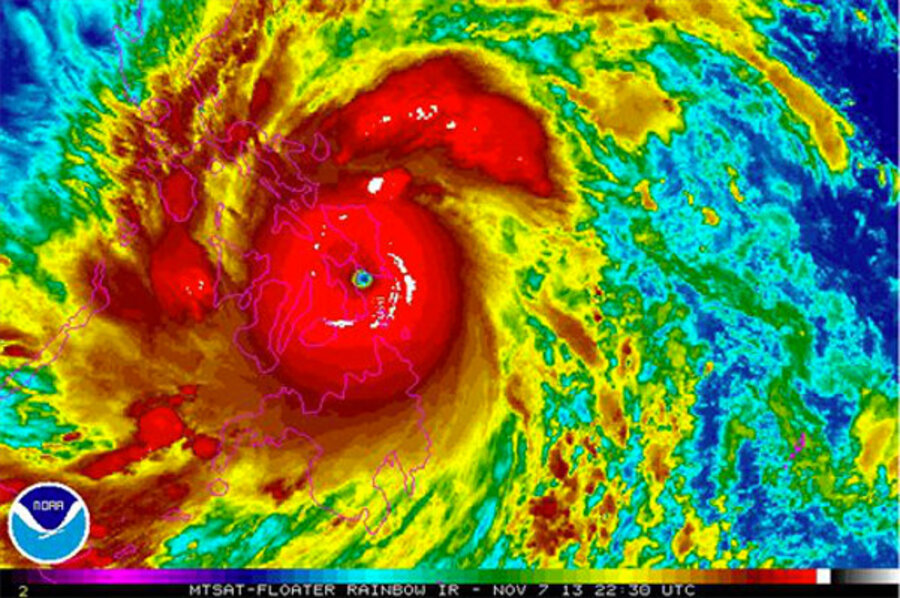Philippines typhoon: Millions flee 'super-typhoon' Haiyan
Loading...
| MANILA
Typhoon Haiyan, the strongest storm of the year, slammed into the Philippines' central islands on Friday, forcing millions of people to move to safer ground and storm shelters, cutting power and phone lines, and grounding air and sea transport.
The Category 5 "super typhoon," with destructive winds gusting up to 170 mph, whipped up giant waves as high as 12-15 feet that lashed the islands of Leyte and Samar, and was on track to hit holiday destinations.
"We are fearful because there is talk that the sea will rise," said Feliza, an elementary school teacher in Southern Leyte province, when interviewed by a local radio station.
"We can feel the powerful winds. Our school is now packed with evacuees. Trees in coastal areas have already fallen."
About a million people are in shelter areas in more than 20 provinces, after Philippine President Benigno Aquino on Thursday appealed to people in Haiyan's path to evacuate danger areas, like river banks, coastal villages, and mountain slopes.
Haiyan is forecast to pass just north of the Philippine's second largest city Cebu, home to around 2.5 million people.
Authorities have grounded ferry services and fishing operations, suspended nearly 200 local flights have been suspended, and commuter bus services stopped as the storm dumped torrential rain and ripped iron roofs off buildings and houses.
Schools, offices, and shops in central Philippines were closed, with hospitals, soldiers, and emergency workers on standby for rescue operations.
The state weather bureau said Haiyan, locally known as Yolanda, is expected to exit the Philippines late on Saturday and then move into the South China Sea.
An average of 20 typhoons hit the Philippines every year. In 2011, typhoon Washi killed 1,200 people, displaced 300,000 and destroyed more than 10,000 homes.
In September, Category 5 typhoon Usagi, with winds gusting of up to 149 mph, battered the northern island of Batanes before causing damage in southern China.
Bopha last year flattened three coastal towns on the southern island of Mindanao, killing 1,100 people and wreaking damage estimated at $1.04 billion.
(Editing by Michael Perry)







